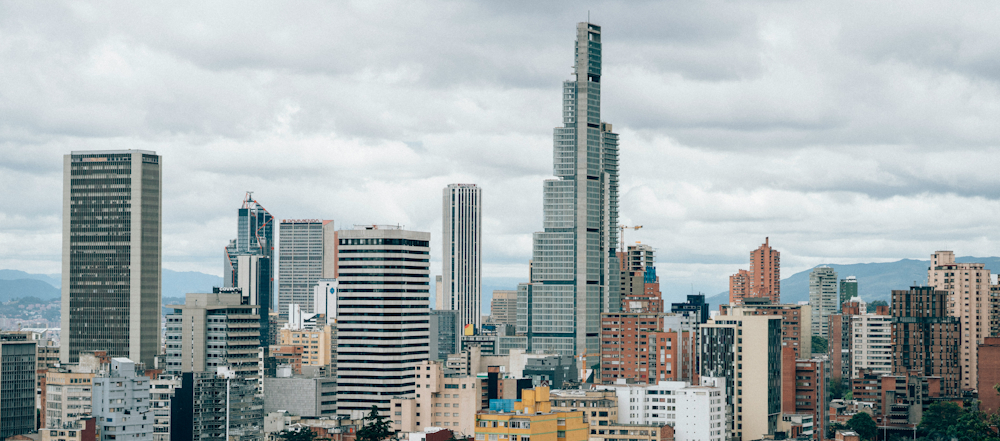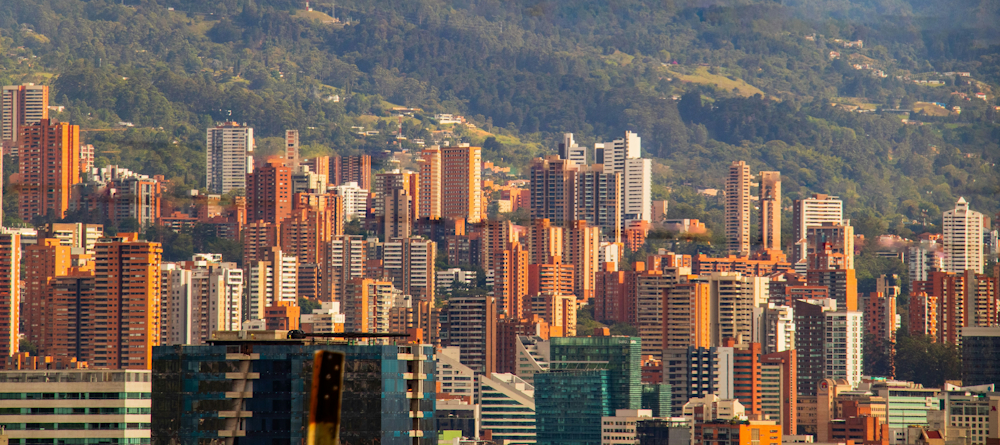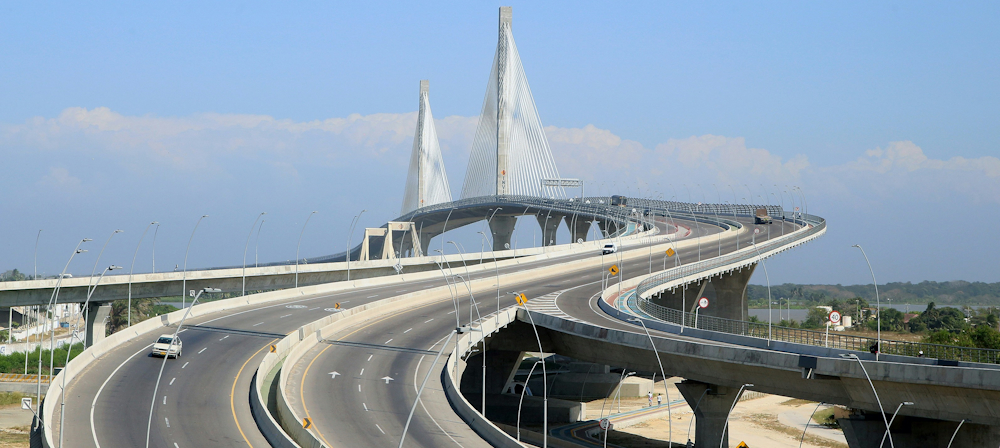Living in Colombia as an expat
Open-minded and adventurous expats moving to Colombia will find an unspoilt land with a friendly and curious local population. A geographically diverse country, Colombia has all kinds of scenic beauty on offer, from vast mountain ranges to green prairies, lush rainforests and sun-drenched coastlines.
Most foreigners living in Colombia are based in the capital, Bogotá, although Medellín has become increasingly popular with digital nomads and remote workers in recent years. Expats should be able to find a community in most major Colombian cities, including Cartagena, Cali, Barranquilla, and Pereira. While many young expats still come to Colombia to work as English teachers, the country now attracts growing numbers of remote workers and digital entrepreneurs.
Pros and Cons of Moving to Colombia
Expat Experiences in Colombia
Working in Colombia

Working in Colombia typically requires fluent Spanish for most local employment opportunities. Traditional sectors hiring expats include oil and gas, construction, healthcare and education, although foreign investment in these industries has declined in recent years. English teaching is a common path for native speakers, typically requiring TEFL certification.
Colombia has adopted remote work policies and launched a digital nomad visa programme. The country has become increasingly popular with freelancers and remote workers who earn income from international clients. The tech sector continues to grow, particularly in roles serving foreign companies.
Working in Colombia
Visas for Colombia
Colombian culture
Colombian culture places strong emphasis on personal relationships and warmth. Colombians are expressive, family-oriented people who welcome foreigners enthusiastically. Building trust and establishing genuine connections matters deeply, whether in social or professional contexts.
The work culture in Colombia tends to be hierarchical and formal, particularly in major cities like Bogotá and Medellín. Business relationships develop through face-to-face meetings rather than emails or phone calls. Communication can be quite indirect to avoid offence, so reading between the lines becomes essential. Time operates more flexibly than in North America or Northern Europe, with meetings often starting 15 to 30 minutes late despite expectations of punctuality from foreign guests.
Local Culture in Colombia
Business Culture in Colombia
Finding accommodation in Colombia

You can find accommodation in Colombia to suit almost every budget, although expats typically gravitate towards middle- to upper-class neighbourhoods that provide security, reliable services, modern infrastructure, access to international grocery shops, and proximity to public transport and amenities. Colombia uses a stratification system (estratos) ranging from 1 to 6, with most expats feeling comfortable in Estrato 3 or higher.
The rental market is active, and properties in popular expat areas move quickly. In Medellín, neighbourhoods like El Poblado and Laureles attract the largest expat communities. Bogotá’s Chapinero, Usaquén, Chico, and Rosales offer similar appeal through good infrastructure and international dining options.
Cost of living in Colombia
The cost of living in Colombia is low compared to North America or Europe. Bogotá ranks among the most affordable South American capitals, with Buenos Aires in Argentina, Montevideo in Uruguay, São Paulo in Brazil, and Santiago in Chile all proving pricier.
Private healthcare is reasonably priced by international standards. International school tuition can represent a significant expense for families, particularly at top-tier institutions in Bogotá and Medellín. Income tax rates reach up to 39 percent for residents, although the general tax burden is moderate compared to many Western countries.
Cost of Living in Colombia
Money and Taxes in Colombia
Living in Colombia with children
Families living in Colombia with children will find an engaging environment with diverse activities and experiences. The major cities provide kid-friendly parks, museums, restaurants, entertainment centres and playgrounds, while the country’s varied geography creates opportunities for adventure-filled holidays. From coffee plantation visits to coastal excursions, families find plenty to keep children entertained and engaged.
Private healthcare maintains high standards in major urban centres and is reasonably priced by international standards. Modern facilities and well-trained medical professionals serve expat families throughout Colombia’s larger cities, and Bogotá, Medellín, Cali, and Barranquilla all have particularly strong healthcare infrastructure.
Healthcare and Health Insurance in Colombia
Finding a school in Colombia
Parents finding a school in Colombia have various options available. International schools provide high-quality education comparable to institutions worldwide. Bogotá hosts the largest concentration of international schools, offering curricula including the International Baccalaureate, American, British and European systems. Medellín and other major cities have more limited international school options, although bilingual private schools are widely available.
Colombia’s public and private school sectors have improved significantly in recent years. International schools maintain similar standards to those found globally and cater to both expat families and local students seeking international qualifications.
Education and Schools in Colombia
Getting around in Colombia

Getting around in Colombia varies significantly by city, with public transport options ranging from efficient metro systems to extensive bus networks. Medellín stands out as Colombia’s only city with a metro system, which is clean, safe, efficient, and affordable. Bogotá relies on TransMilenio, a bus rapid transit system with dedicated lanes, while Cali and Cartagena have their own bus rapid transit networks.
Taxis are cheap and widely available, with ride-hailing apps like Uber, DiDi, and InDriver operating in most major cities. These apps help overcome language barriers for non-Spanish speakers. Driving proves challenging due to unpredictable traffic patterns and varying road quality, leading many expats to rely on public transport, taxis, ride-hailing services or hired drivers instead.
Transport and Driving in Colombia
Climate and weather in Colombia
The climate in Colombia varies dramatically across its diverse geography, from tropical coastal lowlands to cooler mountain highlands. The country experiences primarily tropical weather patterns, although conditions differ significantly between regions. Colombia’s tropical forests, deserts, savannas and alpine zones each create their own microclimates, with temperature determined more by altitude than by season.
May to November generally brings the wettest weather throughout most of the country, while December to April marks the dry season. Coastal areas have high temperatures and humidity year-round, while highland cities like Bogotá enjoy mild, spring-like weather throughout the year.
Climate and Weather Charts in Colombia
Relocating to Colombia will be an exciting step full of new opportunities, even for the most seasoned expat. Although certain challenges face expats in the country, new arrivals should rest assured that the warm hospitality offered by the Colombian people will ensure that they settle in quickly.
Fast facts
Official name: Republic of Colombia
Population: Around 53 million
Capital city: Bogotá
Other major cities: Cartagena, Medellín, Cali, Barranquilla
Neighbouring countries: Colombia borders Brazil, Ecuador, Panama, Peru, and Venezuela.
Geography: Colombia forms part of a region known for earthquakes and volcanic activity. The Andes mountain range dominates the country, and most urban centres are set in the mountains. There are large coastal areas, deserts along the Pacific Ocean and the Caribbean Sea, and vast areas of the Amazonian jungle shared with Brazil, Ecuador, Peru, and Venezuela. Colombia also has a few remote islands near Nicaragua.
Major religions: Roman Catholicism and other denominations of Christianity
Political system: Multi-party democracy
Main language: Spanish (official). English proficiency is limited outside major business centres and tourist areas.
Money: The Colombian Peso (COP) is, in principle, divided into 100 centavos, but in practice, only pesos are used. It is relatively straightforward for expats to open a bank account in Colombia with proper documentation.
Tipping: Tipping is common for foreigners, but locals rarely tip. Tipping in a restaurant is usually 10 percent of the bill. Some restaurants automatically add a service charge.
Time: GMT-5
Electricity: 110V, 60Hz. Two-pin flat blade attachment plugs and three-pin (two flat blades with a round grounding pin) plugs are used.
Internet domain: .co
International dialling code: +57
Emergency contacts: 123 (medical, fire, and emergencies), 112 (local police)
Transport and driving: Cars drive on the right-hand side of the road. Public transport includes minibus taxis, metered taxis and buses. Taxis are generally safe and affordable in major cities. Ride-hailing services such as Uber, Didi, and Beat are widely available in Bogotá, Medellín and other major urban areas.
